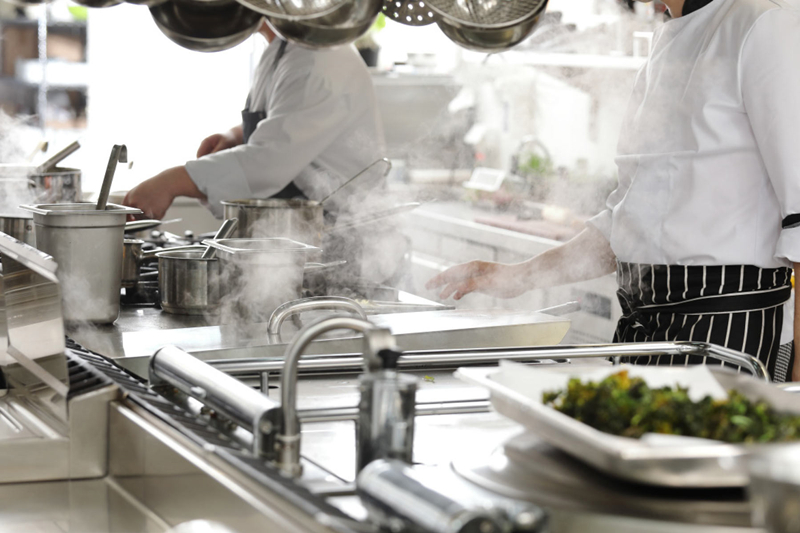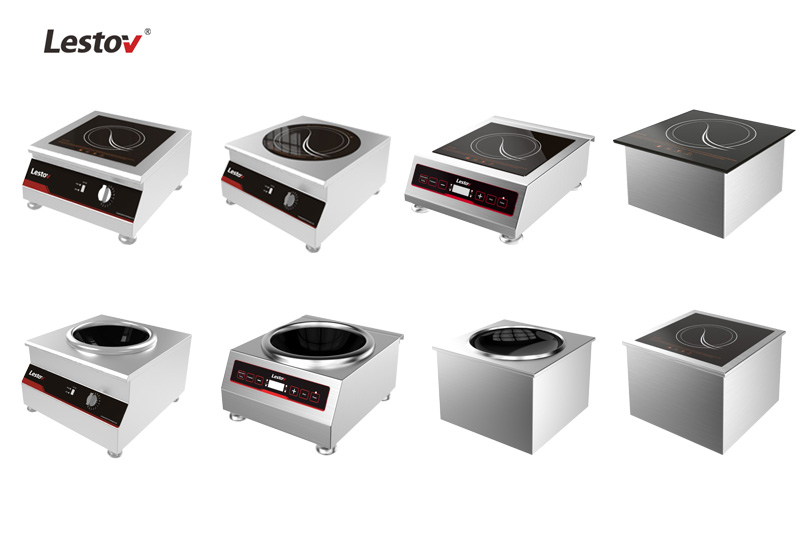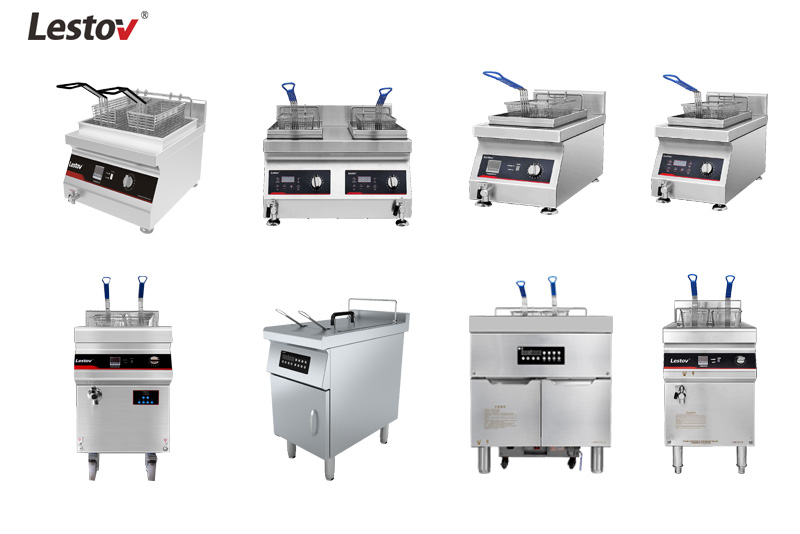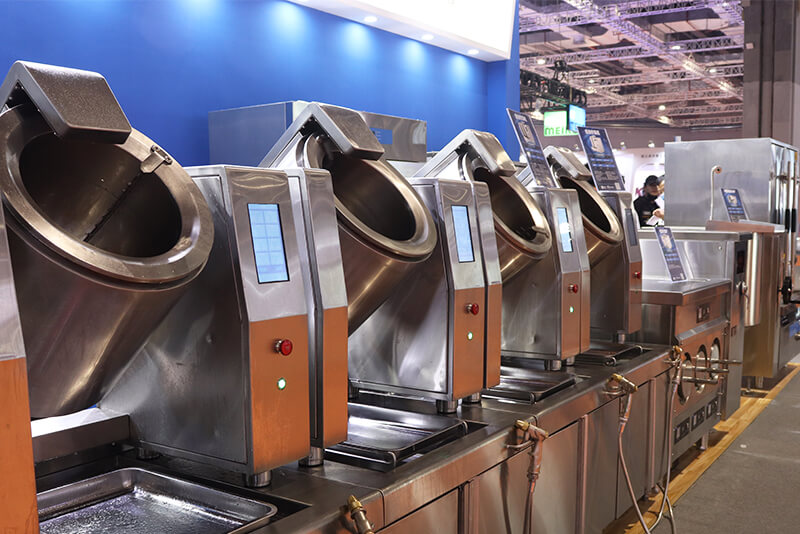In the catering industry, efficiency and precision are crucial. Commercial induction fryers are gradually becoming…

Why do chefs like gas stove more than commercial induction cookers?
Chefs have long been prejudiced against commercial induction cooktops, believing that commercial gas stoves are the best way to get the most out of their cooking.
Many restauranteurs believe that commercial gas burners are way more economical than commercial induction cooktops. Is this the truth? Are these beliefs fact or are they born out of the fact that most persons haven’t tried out commercial induction stoves?
For a better understanding of which commercial cooker is better, it would be a great idea to check out how commercial induction cooktops work and compare their advantages as well as disadvantages.

How Do The Commercial Induction Cookers Work?
It’s important to understand how commercial induction cookers work. The induction heating element in them is a powerful magnet that yields a magnetic field under the ceramic hob surface. Once you place a cooking vessel in it that is metallic, the energy created by the magnetic field induces the cookware to produce a form of electrical contact with it.
It’s this transfer of energy that brings about the heating of the metal (cookware). You can control the heat generated by the magnetic field on the induction cookware. This means that your food will only heat when you place compatible cookware over your commercial induction hob. Once it’s not in use, the induction stovetop will remain cold ensuring you never get burned.
Mechanism Of Operation For Commercial Induction Cooker
1) An electricity field produces a coil that brings a huge electromagnetic field.
2) The electromagnetic field created seeps through the magnetic particle of the cookware creating a mild electric current that brings the heat.
3) This heat generated on the cookware gets transferred to the contents in it (the soup, whatever you’re cooking).
4) Everything outside the cookware remains cool and unaffected by the electromagnetic field. Immediately you take off the cookware from the commercial induction stove, the heating element stops producing.
This whole process means induction gives the pan the power to become the major source of heat. The hob itself acts as an electromagnetic field that is easily controlled by sophisticated systems.
One major reason commercial induction cooking is loved is the fact that its cooking process can be controlled to precision. This, of course, is unlike a gas stove where you can’t exactly control the temperature of what you’re cooking. In commercial induction cooktops, the temperature of the pot can be set to whatever you like while the cookware will always heat immediately.
Commercial induction cooktops are built to be easily moved and stored in various places. They are usually portable but also have bigger versions that can be incorporated into your kitchen counter as part of them. They don’t eat up space at all and they are ergonomic. Commercial gas stoves are known to be space-consuming and they can’t fit everywhere because they get hot easily.
Virtually all commercial induction cooktops built come with special sensors that turn the machine off when there is no cookware on them.
This way, there is no single waste of energy meaning you can rest assured that what you set is what comes out every time. We can easily say commercial induction cooktops are eco-friendly. Gas stoves aren’t set to work like this, meaning that they will continue to heat and burn even when there is no cookware on them, it’s safe to say they are not eco-friendly.
Easy Temperature Control
In commercial induction cooktops, the temperature can easily be adjusted to meet a precise setting and this makes it very important to achieve a better, healthier way of cooking than the commercial gas cooktop.
Speed
The fact that the cookware in commercial induction cooking heats very swiftly to the set-out temperature makes it undeniably very fast! If you set water to boil on a commercial gas burner and a commercial induction cooktop, the induction cooktop stove will bring it to a boil 2 times faster than the gas burner.
Safety and Burns
In commercial induction cookers, there are zero open flames, meaning you literally can’t get burned. To put it into context, if you put a plastic handle pan on the induction range cooker, it’s not going to melt at all, because there isn’t any high temperature in the air. This, of course, is unlike gas stovetops where the temperature around it gets really, hot and can burn one immediately.
Easy to Clean
With commercial induction stovetops, you get a simple flat surface that is made of ceramic. Ceramic means it will always be cold since the air around it is never hot, meaning, you can easily clean it anytime you want, anytime there is spillover.
Design
They are Efficient
Disadvantages Of Commercial Induction Cooktops
Commercial induction cooktops come with only one disadvantage, and that is the fact that you need special cookware to use them with. This means that if you don’t own any of these special cookware, pans, or pots, you won’t be able to cook.
They are made to only work and give heat to ferrous materials like iron, stainless steel, and cast iron. They don’t work with non-ferrous materials. Gas stoves, on the other hand, give heat to just about any cookware type.
Commercial induction cooktops have come a long way in the world today, they have become trends in many commercial kitchens and it’s safe to say that in no distant time, they will assume their rightful role as the best way of cooking available to man now. With safer, more efficient, faster means of operation, gas stoves have nothing on commercial induction cookers at all.
Dit bericht heeft 1 reactie
Geef een reactie
Je moet inloggen om een reactie te kunnen plaatsen.



https://leadstov.com/contact-us/